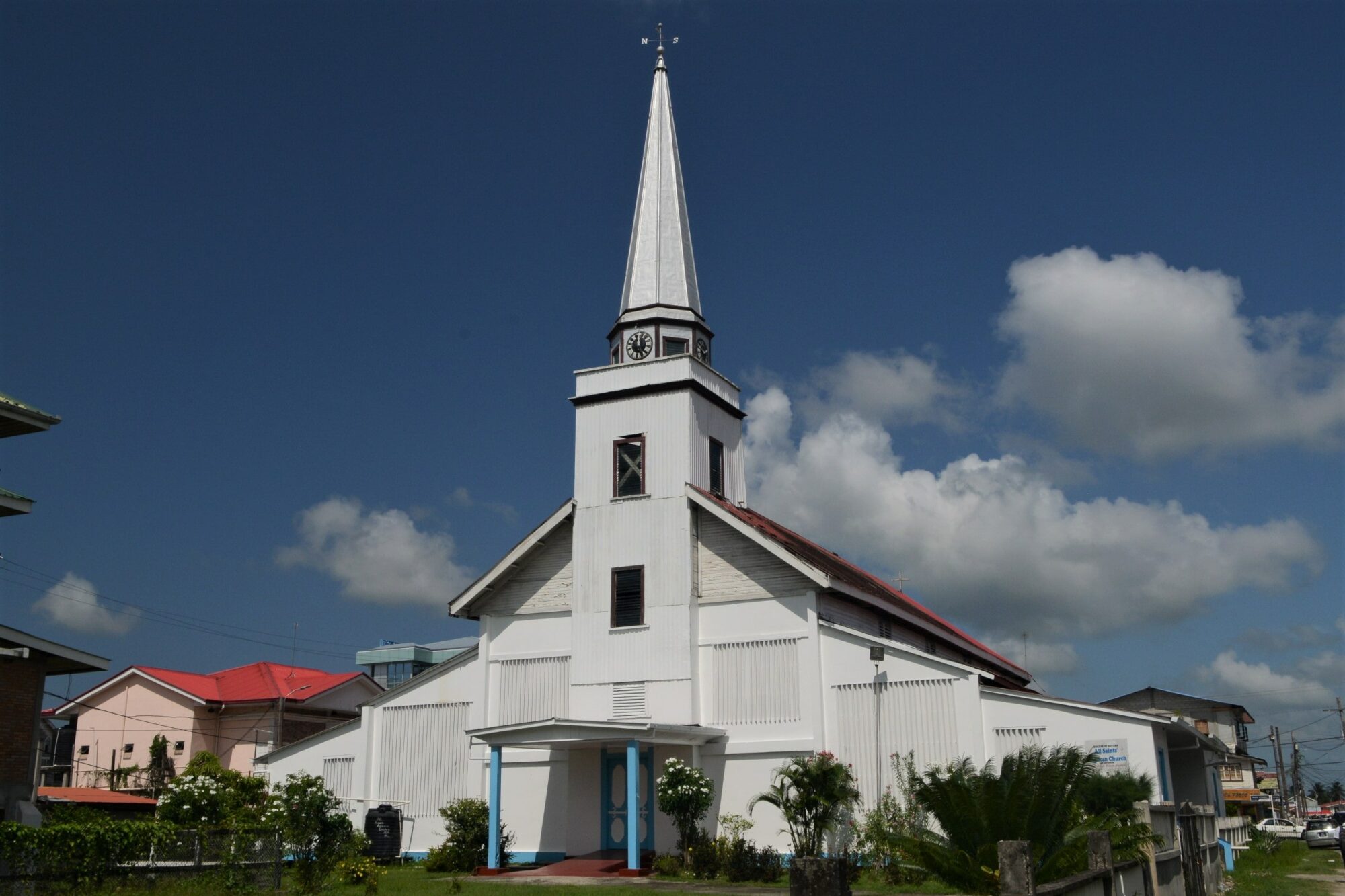Location: New Amsterdam, Berbice
Classification: Religious
Period/ Year Built: Completed 1837, consecrated 1839
Historical Background / Description:
All Saints’ Anglican Church is located at the corner of Main and Trinity Streets, New Amsterdam. The Anglicans (known then as the Church of England) can be traced back to 1811 in the colony of Berbice. They shared facilities with the Dutch in the region. The Colony Church (now known as the All-Saints Presbyterian Church) was opened for service in May 1820 and the use of the building was rotated every other Sunday between the Anglicans and the Dutch.
Overtime the Dutch population diminished and the Scots started to occupy the church in their stead. The Scots infrequently used the church at first due to not having a Scot or Dutch priest. They later claimed the Dutch user rights of the church on the basis that Scotsmen were a part of the Dutch church. The Rector at the time, Mr. Rochford Redwar objected to this claim. The matter was forwarded to Governor Sir James Carmichael Smyth for his intervention and the ruling went in favour of the Scots. On April 14, 1836, Bishop Coleridge on his visit to New Amsterdam stated that there should be “a commodious and at the same time respectable building for the members of the Church of England to worship God without interruption, after their accustomed form and Apostolical Order”.
A compensatory grant of 15,000 guilders was provided to the Church of England by the Court of Policy and a plot of land, its current location, was purchased. While construction of the new church was on-going, church services were held in the old Masonic Hall which later became the Rectory. All Saints’ Anglican Church was completed by the end of 1837, at a cost of 66,000 guilders. While services began almost immediately in the building, the church was not licensed until February 1838. It was consecrated by Lord Bishop on June 30, 1839.
The church is constructed mainly from timber and consists of features such as fixed timber louvers, Gothic stained-glass windows of St. George, mild decorative fretwork at the wall plate, and tall spire centrally placed, which marks the main entrance to this church. The long sides of the building are now flanked by concrete enclosures. In 1844, Her Majesty, the Queen, contributed $ 750 through His Excellency the Governor to purchase a stained-glass window for the eastern side of the church. The stained-glass window was erected in 1852 under the supervision of Reverend Mr. Bourne.

